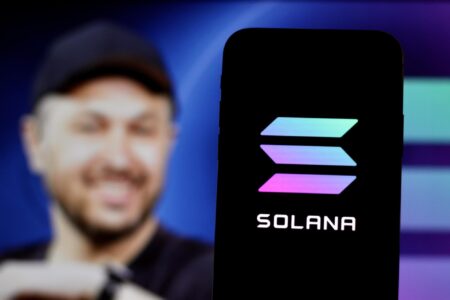What happened this week in the world of blockchain and cryptocurrencies? The most relevant local and international events, along with engaging background reports, concisely summarized in the weekly review.
Selected articles of the week:
Stablecoins are digital assets with a stable peg to a specific asset. In the crypto sector, stablecoins with a peg to the US dollar are mainly used. However, some issuers are working on Swiss franc alternatives. These are subject to new regulations in Switzerland, as the Swiss Financial Market Supervisory Authority (FINMA) recently announced in a supervisory notice. On the one hand, issuers need a hard-to-obtain banking license, and on the other, each individual customer must be identified via a KYC procedure. These rules make it impossible to do business in Switzerland, says the Swiss Blockchain Federation in a response letter. Swiss issuers of stablecoins are effectively forced to realize their project abroad.
According to the Swiss Blockchain Federation, the new FINMA regulations make it impossible to issue competitive stablecoins in Switzerland.
BRICS opts for SWIFT alternative
In recent years, geopolitical tensions such as those between the USA and China or the South American states have sparked interest in alternative systems to SWIFT. Now the BRICS countries are taking matters into their own hands. BRICS is a supranational alliance between the first five founding members Brazil, Russia, India, China and South Africa. They were later joined by Egypt, Ethiopia, Iran and the United Arab Emirates. BRICS aims to reduce dependence on the Western-dominated SWIFT network and protect its economies from external pressure. A look at the alternative currency strategy.
BRICS countries develop an alternative payment infrastructure to the SWIFT system, strengthen ing their economic independence.
“Solana killer” on the rise?
Sui is a smart contract platform that specializes in the fast processing of transactions and competes with blockchains such as Solana. Within a week, the native token SUI recorded a price jump of 89%. The rise is no coincidence. Various user data for the blockchain platform has improved over the past year. Nevertheless, Sui still lags behind Solana in many respects. A detailed analysis by 21Shares Research.
Sui’s Mysticeti upgrade improved speed and affordability, positioning the blockchain as a potential challenger and Solana killer.
Integrated Solana links on conventional websites
Solana’s blockchain links (Blinks) were introduced together with “Solana Actions” in June 2024. These are special URLs that allow users to interact with the Solana network from traditional social media websites. In this way, they facilitate blockchain transactions for payments, purchasing tokens, NFTs, staking and more. Without leaving the actual platform, users can preview, sign and send transactions.
Solana Blinks streamline blockchain transactions within social media platforms, enhancing usability but pose potential security risks.
Billion-dollar fraud busted
In addition: This week, the US Securities and Exchange Commission (SEC) sued the crypto company NovaTech and its founders. The project fraudulently raised over 650 million US dollars from more than 200,000 investors. NovaTech allegedly assured investors that they would make a profit from day one without any risk. According to the SEC complaint, however, the married founding couple did not use the funds for real investments. Rather, the new funds were used to pay out previous investors and distribute commissions to intermediaries. NovaTech’s scam thus corresponds to the classic fraud scheme of a pyramid structure. After four years, the project finally collapsed in May 2023. The New York public prosecutor’s office, which also filed a lawsuit two months ago, estimates the damage at over USD 1 billion.
The U.S. Securities and Exchange Commission (SEC) has sued the cryptocurrency company NovaTech and its founders for alleged fraud.









